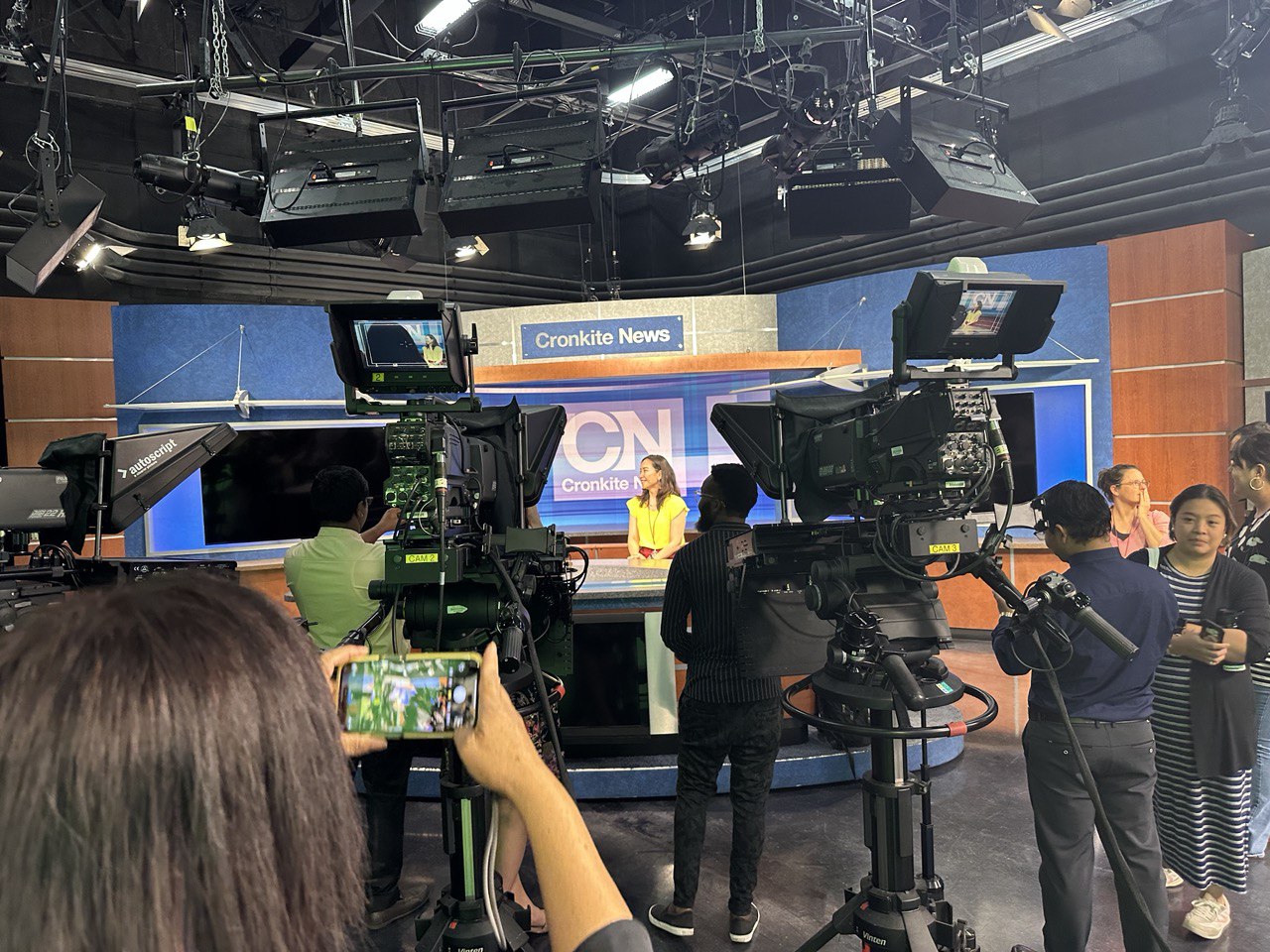For almost a month now, SUSI scholars from 18 countries have been meeting within the walls of the Walter Cronkite School of Journalism and Mass Communication, one of the country’s leading educational institutions in the field.
In this post I share what I consider the five of the most important facts about this school as well as my opinion on them.
Fact #1: Cronkite News (produced by Cronkite School) has a collaboration with PBS Arizona, one of the largest public television stations in the country with a signal reaching 80% percent of homes in the state.
Comment: We walked into the Cronkite news studio on day one—the day we first came to Arizona State University and met with professor Dawn Gilpin. Seeing how the students were preparing the newscast, I was amazed at the equipment provided to the students. My group mates and I were delighted while photographing and filming the studio and the presenters. I thought that with so much equipment and great facilities, students would always be motivated to create quality content. This was only our first day and more pleasant surprises awaited us…
Fact #2: TV, sports and investigative journalists are trained here
Comments:
- The school pays great attention to the development of sports journalism in the country and its graduates work in the largest sports complexes.
The Cronkite School maintains partnerships with major sports organizations around the world, providing students with numerous opportunities to gain hands-on experience…
- …If you want to learn the basics of television journalism while studying at university, you should come here. Experienced mentors, a full set of equipment, a studio – a true dream for any communication enthusiast.
Even while a student, undergraduates will most likely become more experienced than some practicing journalists.
- When it comes to learning investigative journalism skills, students have all they need at the Howard Center for Investigative Journalism at Cronkite. They are taught by Mark Greenblatt, Professor of Practice and Executive Editor, a decorated investigative journalist, whose work experience has greatly impacted the public and also inspired changes in laws. I reviewed some of the investigations produced by Howard School students and I was struck by the fact that their content met all the criteria of international investigative reporting standards. After all, this is a very complex and sometimes dangerous journalism practice, which sometimes turns out to be beyond the capabilities of even experienced practicing journalists in many countries.
- And finally, I can’t help but note the work of the broadcast and digital ICT Newsroom – the nation’s largest Indigenous news network, headquartered at the Cronkite School. We witnessed the production team working in the control room to produce their daily newscast and then proceeded to talk to anchor Aliyah Chavez, who was smiling at us while she told us how much she enjoys her work. I believe that such a thing should be noted, because it is a great happiness to love and enjoy one’s work.

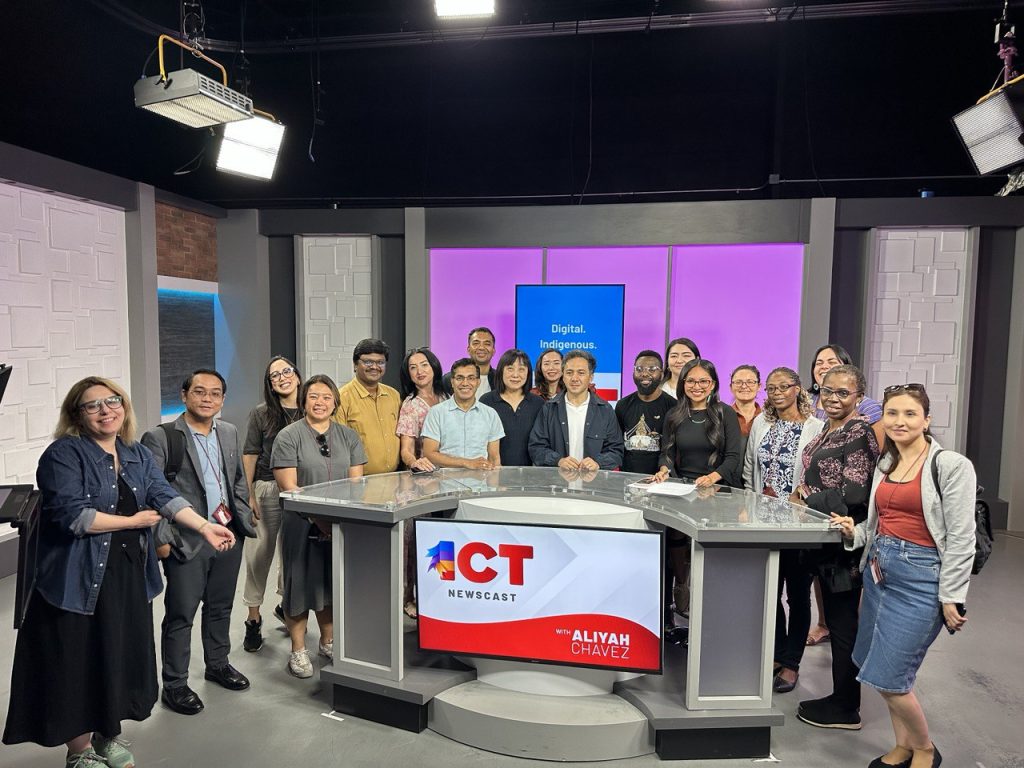

Fact #3 The First Amendment to the U.S. Constitution, which was ratified in 1791, appears in writing more than once within the walls of the School
Immediately upon entering the building of the Cronkite School, as well as on the entrance floors, you can read the First Amendment:
“Congress shall make no law respecting an establishment of religion,
or prohibiting the free exercise thereof; or abridging the freedom of speech,
or of the press; or the right of the people peaceably to assemble,
and to petition the Government for a redress of grievances”
And this, of course, speaks to the Cronkite School’s policies, as well as the attitude of the authorities towards the media. After all, the media are the eyes and ears of society, and restriction and pressure on freedom of speech is fraught with consequences that generally negatively affect the development of the country. Here, it seems to me, student journalists feel free and do not experience pressure and censorship–and believe me, this is worth a lot.
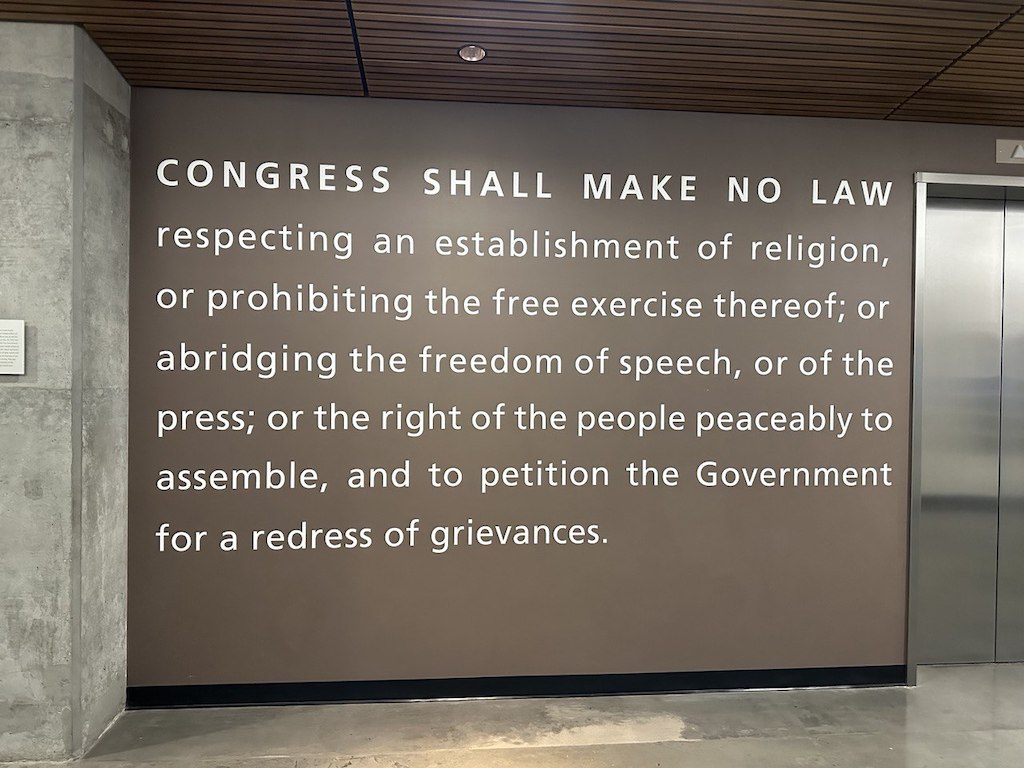
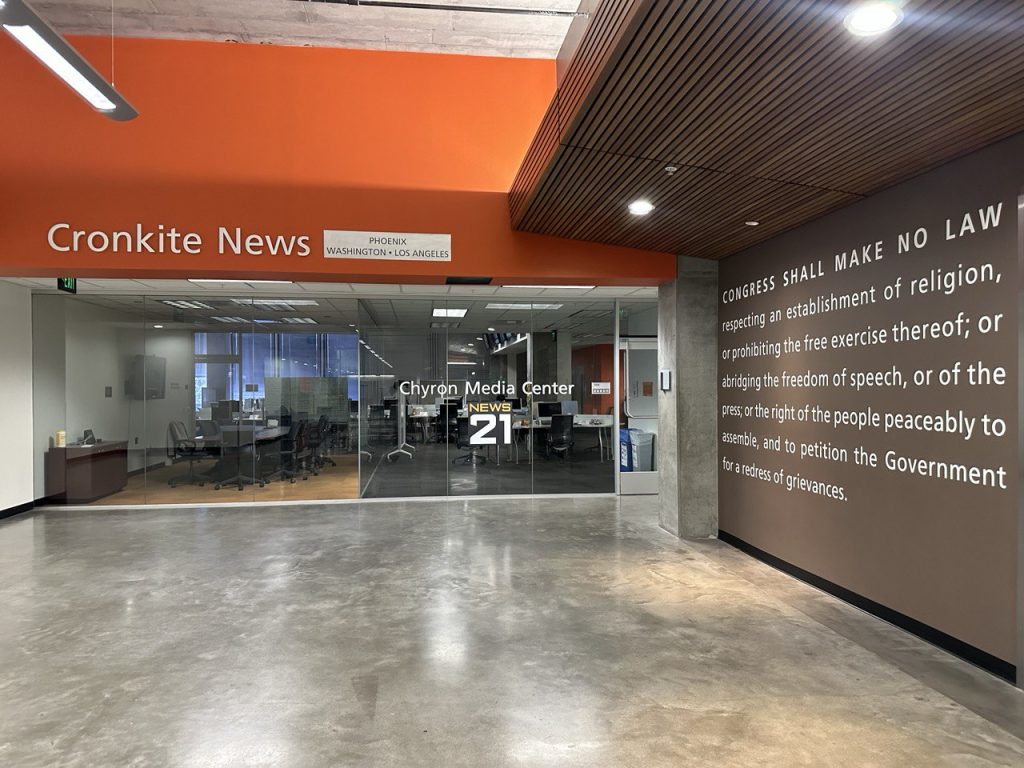
Fact #4 Quality content is also created using the latest technology
Comment: Combining new technologies such as VR (virtual reality) and AI (artificial intelligence) with journalism and art to create quality content and storytelling is something I never thought was possible.
Ms. Retha Hill, the award-winning executive director of the Cronkite School’s New Media Innovation & Entrepreneurship Lab, guides her students to create video games, mobile applications and 3D scenes for virtual reality – all to help newsrooms tell stories in new ways. It is amazing!
During her session, we gave life to photographs, created our own avatars, and imagined how we could teach journalism using new technologies if we had such opportunities.
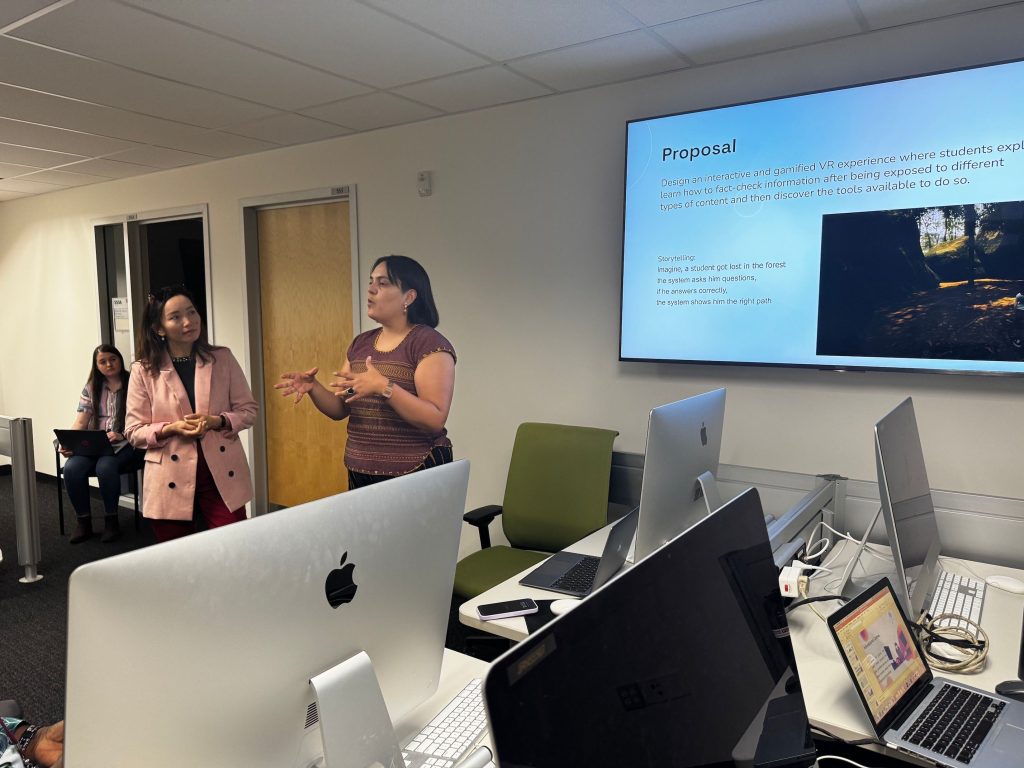
Fact #5 Media analysts from Kyrgyzstan now know about Cronkite
Comment: This week Internews in Kyrgyzstan gathered my colleagues – media critics for a workshop. I joined this workshop via Zoom for an hour and a half and shared my impressions of the SUSI program, and of course, I talked about the Cronkite School. My colleagues really liked how this educational institution works. As a curious journalist, I could not limit myself to just talking about this. That is why I also prepared a video review for other colleagues from Kyrgyzstan.
In conclusion, I want to note that the most important insight that I have gained from seeing the work of the Walter Cronkite School of Journalism and Mass Communication is that we need to strengthen the collaboration of the nation’s leading media organizations with universities.. Basically, it’s essential that we open media branches within educational institutions where the future generations of journalists are trained.
